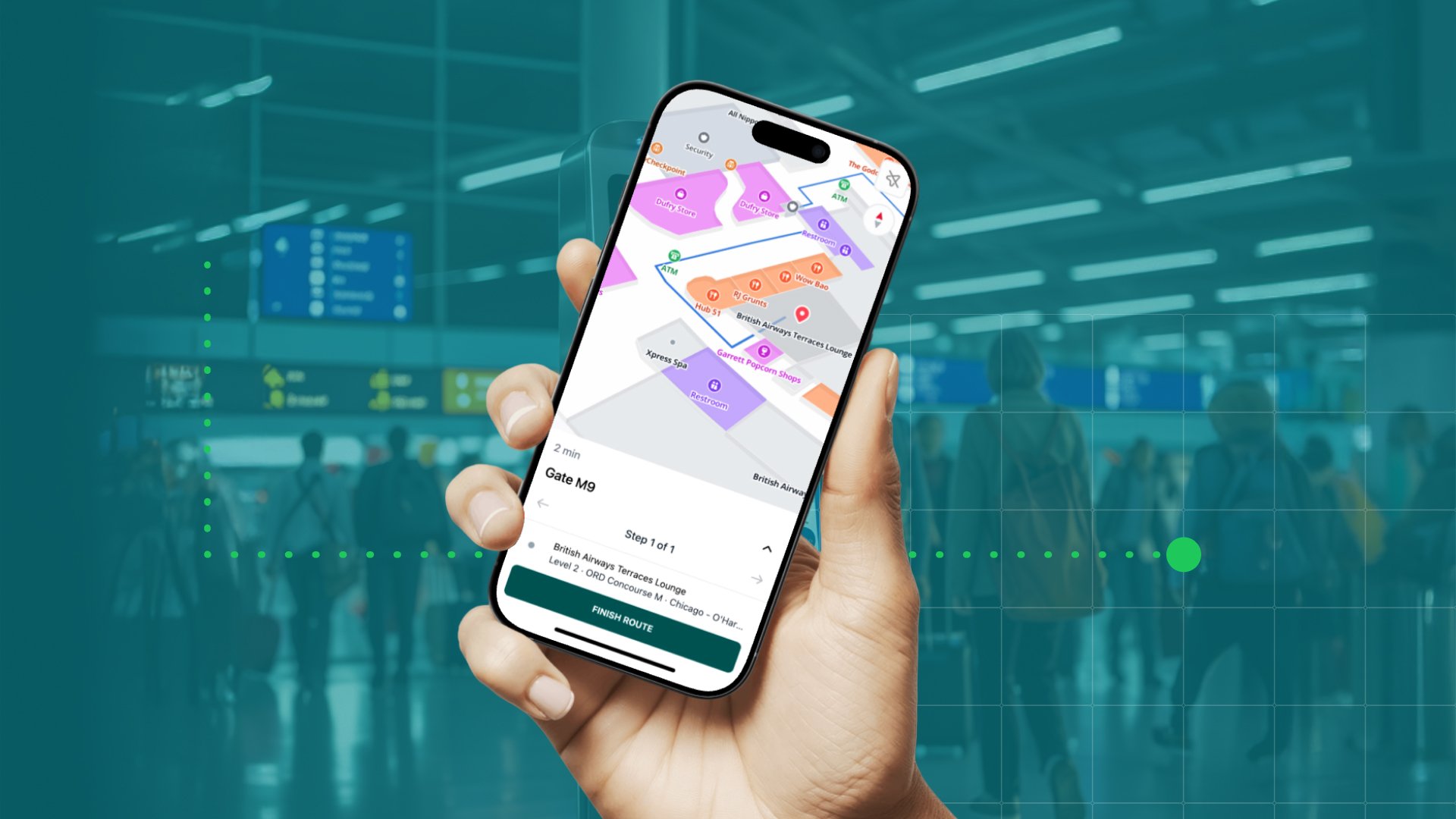7 Ways to Get More Value From Your Event Map
Event maps are often seen as simple attendee tools, but they can offer so much more. For events like trade shows, festivals, expos, and conventions, a well-built map can support attendee engagement and discovery, exhibitor success, and smoother operations. When treated as part of your digital experience layer, your map becomes a bridge between how people explore your space and how your teams run it. Here are seven simple ways to get more from your event map:
1. Make search work the way people think
Attendees are usually looking for what is offered, not who is offering it. Instead of Booth 312B, they’re looking for wireless chargers, seating areas, or a specific category like AI. Add every booth as a point of interest (POI) and tag it with relevant terms. Including common search aliases ensures attendees can easily find what they want—and boosts foot traffic for your vendors.
2. Use QR codes to simplify wayfinding
Indoor navigation systems can be pricey and difficult to set up in large venues. Instead, place QR codes at high-traffic areas like entrances and help desks that can open the map with the attendee’s location already set. From there, it’s easy to search and follow step-by-step directions to booths or amenities. This low-friction entry point adds location awareness instantly and creates spatial continuity without complex infrastructure.
3. Include outdoor areas to reduce entry confusion
Attendees start navigating before they get inside. Add parking zones, drop-off zones, and outdoor registration areas to the map, and place QR codes there as well. This gives people a head start in navigating to their first destination and helps reduce congestion at entry points. Bringing the experience layer into outdoor spaces supports seamless transitions between physical arrival and digital orientation.
4. Make key locations easy to find during high-stress moments
Arrival and departure are when people are most likely to feel rushed or disoriented. Make sure POIs like restrooms, wardrobe, registration, bag checks, and rideshare pickup are clearly marked and searchable to make the high-stress moments flow easily. Designing for pressure points is essential in spatial experience planning because clarity and speed during peak stress directly impact attendee perception.
5. Share the map with other teams
Your event map can support more than just attendee navigation. Other teams can use it for booth assignments, security planning, or real-time overlays showing foot traffic or staff locations. When everyone works from a shared spatial foundation, you increase coordination, speed up decisions, and reduce duplication of effort. Share the map with other teams so they can explore integrations and operational uses that make your entire event more efficient, all with the same map foundation.
6. Add external IDs to prepare for integrations
Assign an external ID to each booth or location on the map. These IDs can tie into your CRM, exhibitor platform, or analytics systems, making it easier to sync data across platforms and future-proof your event tech stack. A structured data layer allows your event map to plug into a connected ecosystem—enabling smarter reporting, automation, and interoperability.
7. Customize the map based on audience or event type
Different groups need different information. Set up different profiles to show unique booth routes or highlights for VIPs, sponsors, or different ticket types. If your venue hosts multiple event types, update branding and POIs to reflect the current experience to create a map that always feels relevant. Personalized map views help your event feel curated and intentional, even when attendees or staff are navigating at scale.

Your map can do more than guide people from A to B
With a few simple steps and enhancements, your map can support planning, drive traffic to the right places, and create a smoother experience for everyone involved. The map becomes part of your event’s spatial infrastructure—connecting digital systems, physical layouts, and human behavior. It's one of the most practical tools you already have, so make sure you, your vendors, and your attendees are all getting the most out of it.
Are you getting the most out of your event map?
May 5, 2025
.jpg)



.png)